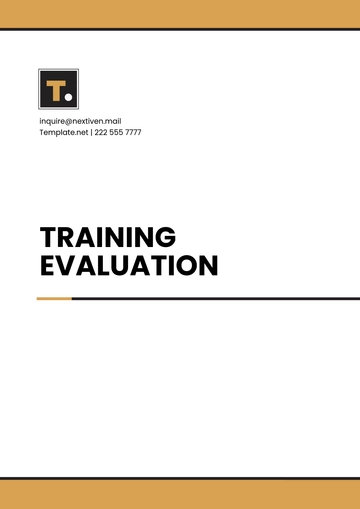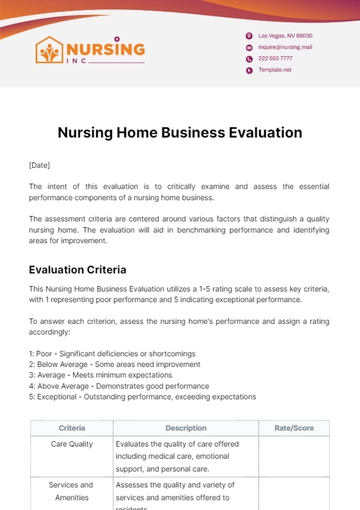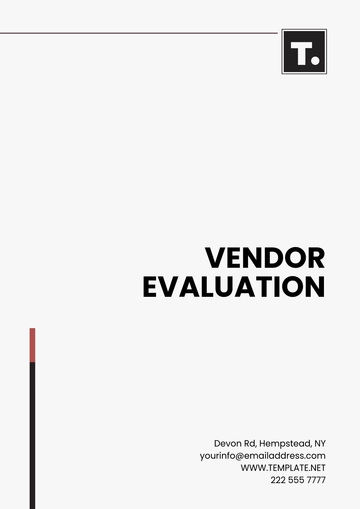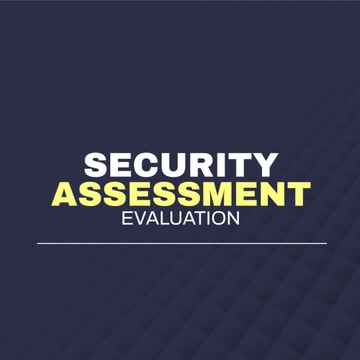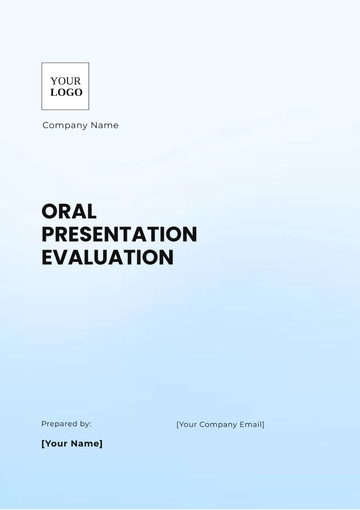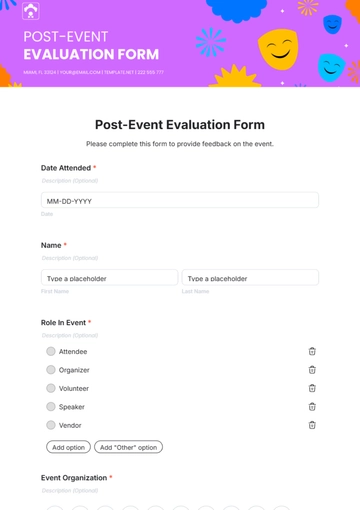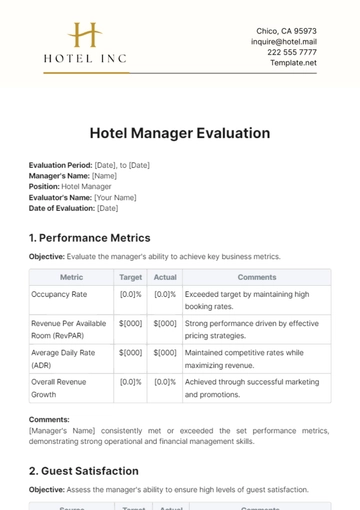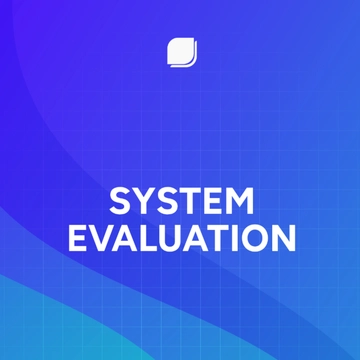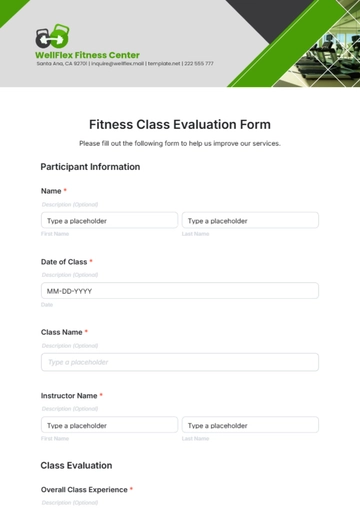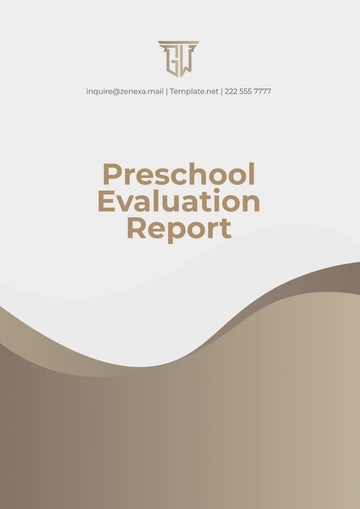Free Finance Payroll Evaluation Manual
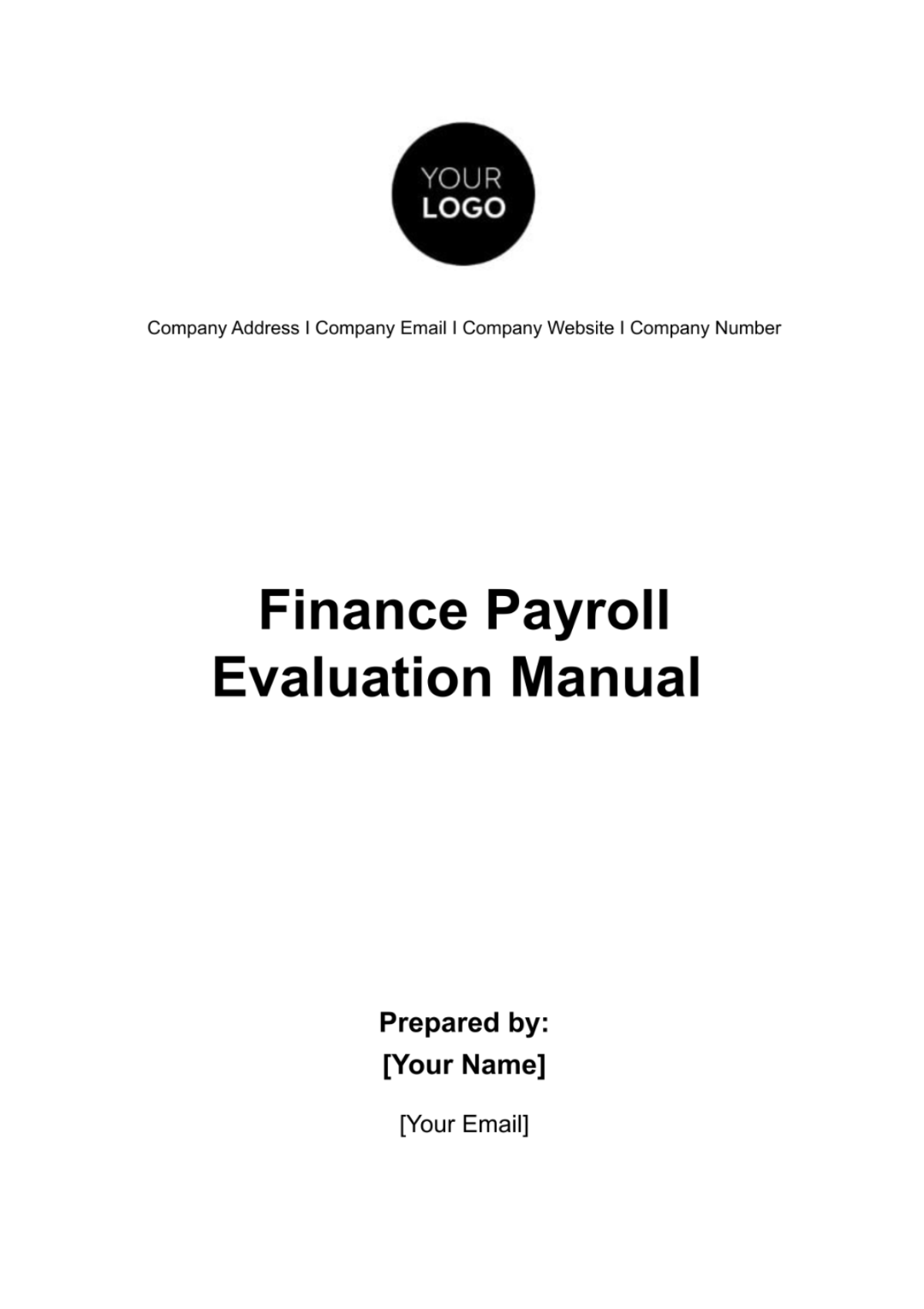
I. Introduction
This document is a critical tool designed to ensure the efficiency, accuracy, and compliance of our payroll processes. The purpose of this manual is to provide a structured approach to evaluate and enhance our payroll system continuously. It serves as a guide for the payroll department, human resources, finance team, and management, outlining the processes and criteria for a thorough examination of our payroll practices.
The scope of payroll evaluation includes assessing the accuracy of payroll calculations, the timeliness of employee payments, adherence to changing tax laws and regulations, and the security of payroll data. Given the significance of accurate and timely payroll processing, not just for compliance but also for maintaining employee trust and satisfaction, this manual is an essential part of our financial management system.
II. Payroll System Overview
We provide an overview of the current payroll system utilized by [Your Company Name]. Our system is designed to streamline payroll calculations, ensure accurate tax withholdings, and provide timely payment to employees. It includes the following key features:
Automated Calculations: Ensuring that wages, overtime, bonuses, and deductions are calculated accurately and consistently.
Tax Compliance: Updated features for handling federal, state, and local tax calculations.
Reporting: Capabilities to generate reports for internal use and regulatory compliance.
However, like any system, it has its limitations and areas for potential enhancement. Understanding these will help in our evaluation and continuous improvement efforts.
III. Roles and Responsibilities
A clear definition of roles and responsibilities is crucial for the effective evaluation of the payroll system. Below are the key players and their duties:
Payroll Department: | Manages the day-to-day operations of payroll processing, including data entry, calculations, and disbursement. |
Human Resources: | Provides employee data, manages benefits information, and communicates policy changes. |
Finance Department: | Oversees the payroll budget, ensures proper accounting of payroll expenses, and liaises with external auditors. |
External Auditors: | Conducts periodic audits to ensure accuracy and compliance with laws and regulations. |
IV. Evaluation Criteria
The Evaluation Criteria section sets the standards against which the payroll system will be assessed. Detailed evaluation criteria ensure a thorough and effective review of the payroll system, providing a clear understanding of performance and compliance.
Accuracy of Payroll Calculations: Every payroll cycle must be scrutinized for accuracy. This includes verifying the correct calculation of hourly wages, salaries, overtime, bonuses, commissions, and any other forms of compensation. Deductions for taxes, benefits, garnishments, and other categories must also be accurate to ensure employees receive the correct net pay.
Timeliness of Payments: Payroll must be processed on a consistent and timely basis. Delays can lead to dissatisfied employees and potentially legal issues. This criterion assesses whether the payroll is consistently prepared and disbursed on the scheduled dates and within the legal time frames.
Compliance with Tax Laws and Regulations: Payroll must comply with all applicable tax laws and regulations. This includes accurate calculation, withholding, and remittance of federal, state, and local taxes, as well as timely and accurate filing of all payroll-related tax forms.
Data Security and Privacy: Protecting sensitive payroll information is critical. This criterion focuses on the measures in place to secure payroll data against unauthorized access, theft, or breaches.
V. Evaluation Process
The Evaluation Process outlines the methodology for assessing the payroll system against the established criteria. It's a systematic approach ensuring consistency, completeness, and objectivity.
Pre-evaluation Preparation:
Before beginning the evaluation, gather all necessary documents and tools. This includes access to payroll records, tax filings, employee feedback, and the payroll system itself. It's also essential to define the objectives, scope, and methodology of the evaluation clearly.
Data Collection Methods:
Employ a variety of data collection methods to gather comprehensive information about the payroll system. This might include:
Reviewing payroll records and reports
Interviewing staff involved in the payroll process
Conducting surveys or questionnaires with employees
Observing the payroll process in action
Analysis Techniques:
Use appropriate analysis techniques to assess the payroll system against each criterion. This might involve:
Statistical analysis to identify trends or inconsistencies
Benchmarking against industry standards or previous performance
Root cause analysis to determine the source of errors or issues
Reporting Findings:
Compile the findings into a clear and comprehensive report. The report should outline the results for each criterion, identify any areas of concern, and provide recommendations for improvement. It should be presented to key stakeholders for review and action.
VI. Accuracy Assessment
The Accuracy Assessment is a deep dive into ensuring that every aspect of payroll is executed flawlessly. This involves a meticulous review of various payroll components.
Verifying Employee Information:
Begin by confirming that all employee records are current and accurate. This includes personal information, tax withholding details, benefit selections, and any other relevant data. Discrepancies in employee information can lead to errors in pay or benefits.
Cross-Checking Time and Attendance Records:
Ensure that the hours worked and attendance records used to calculate pay are accurate and reflect actual employee work patterns. This includes reviewing time clock data, absence records, and overtime requests.
Calculating Wages, Deductions, and Net Pay:
Examine the calculations for each component of the payroll. This involves verifying that wages are based on the correct pay rates, deductions are taken for the right amounts, and the resulting net pay is accurate. Special attention should be paid to:
Base pay and variable pay accuracy
Benefit deductions and contributions
Garnishments and other mandatory or voluntary deductions
Reviewing Tax Withholdings and Contributions:
Ensure that all taxes are calculated and withheld correctly. Review the employer's contributions to taxes and benefits to confirm that they are accurate and in compliance with regulations. This includes:
Federal, state, and local income tax withholdings
Social Security and Medicare contributions
Unemployment and other taxes
VII. Timeliness Assessments
Ensuring the timely disbursement of payroll is essential to maintain trust and satisfaction among employees. Explore strategies and methods to assess and improve the punctuality of the payroll process:
Monitoring Payroll Cycle Efficiency: Reviewing the length of the payroll cycle and identifying any bottlenecks or delays.
Tracking Deadlines for Payroll Processing: Establishing a calendar of all payroll-related deadlines including pay dates, tax filing dates, and end-of-year reporting.
Evaluating Punctuality of Tax Filings and Payments: Ensuring that all payroll taxes are paid and reported on time to avoid penalties and interest.
Compliance Assessment
Compliance with federal, state, and local regulations is a critical component of payroll management. Find detailed procedures for ensuring and maintaining compliance:
Ensuring Adherence to Federal, State, and Local Laws: Regularly reviewing changes in labor laws and tax regulations affecting payroll.
Auditing Internal Policies and Procedures: Periodically reviewing and updating internal payroll policies to ensure they align with current laws and best practices.
Reviewing Documentation and Record Keeping: Ensuring that all payroll records are maintained accurately and securely as required by law.
VIII. Security and Confidentiality Assessment
The confidentiality and security of payroll data are paramount.
Evaluating Access Controls and Authentication Measures: Ensuring that only authorized personnel have access to payroll data and that authentication protocols are robust.
Assessing Data Encryption and Network Security: Verifying that all payroll data transmitted or stored is encrypted and that networks are secure against unauthorized access.
Reviewing Procedures for Handling Confidential Information: Establishing strict protocols for handling and disposing of sensitive payroll information.
IX. Improvement Plan
Once evaluation is complete, an action plan for improvement should be developed.
Identifying Areas for Improvement: Summarizing the findings from the evaluation and highlighting areas that need attention.
Setting Priorities and Goals: Determining which areas should be addressed first based on their impact on payroll accuracy, compliance, and efficiency.
Developing Action Steps and Timelines: Outlining specific actions to be taken, assigning responsibility, and establishing deadlines for completion.
Assigning Responsibilities: Designating team members or departments responsible for implementing each part of the improvement plan.
X. Training and Development
Continuous training and development are vital to maintaining an efficient and compliant payroll system.
Ongoing Education on Laws and Regulations: Ensuring that all personnel involved in payroll are up-to-date on the latest laws and best practices.
Skill Development for Payroll Staff: Providing training to develop the necessary skills for managing payroll effectively and efficiently.
Training on New Technologies and Best Practices: Introducing staff to new tools and technologies that can improve payroll processes.
XI. Monitoring and Review
To ensure the integrity and accuracy of the payroll system, [Your Company Name] implements a rigorous monitoring and review strategy. This approach is designed to detect and rectify errors promptly, adapt to regulatory changes, and continuously improve payroll operations for efficiency and compliance.
Annual Comprehensive Review:
Each year, in January, the Payroll and Finance teams will conduct a thorough review of the entire payroll system. This includes an audit of the previous year's payroll records, a review of all policies and procedures, and an evaluation of system performance. The findings will be documented in an Annual Payroll Report presented to the executive team by March 1st.
Quarterly Processing Reviews:
At the end of each quarter, a more focused review will be conducted to assess the efficiency and accuracy of payroll processing for that period. Special attention will be given to new or altered regulations, system updates, and any discrepancies noted during the quarter. A Quarterly Payroll Brief will be compiled and reviewed by the Payroll Manager and Finance Director.
Incident-Triggered Evaluations:
In response to any significant payroll errors, complaints, or regulatory changes, ad-hoc evaluations will be initiated. The Payroll team, in collaboration with HR and Legal departments, will address and document the issue
XII. Appendices
Appendix A: Relevant Payroll Laws and Regulations
Federal Laws:
Fair Labor Standards Act (FLSA)
Internal Revenue Code (IRC)
Federal Insurance Contributions Act (FICA)
Family and Medical Leave Act (FMLA)
State-Specific Laws:
[State Minimum Wage Act]
[State Unemployment Tax Act]
[State-Specific Leave Policies]
Local Ordinances:
[City/County Minimum Wage Ordinance]
[City/County Paid Sick Leave Requirements]
Appendix B: Glossary of Terms
Gross Pay:
The total of an employee's regular remuneration before taxes, deductions, and other withholdings.
Net Pay:
The amount an employee receives after all deductions have been taken from the gross pay.
Withholding Tax:
A portion of an employee's wages deducted at source to pay for income taxes.
Exempt vs. Non-Exempt Employees:
Classification of employees based on eligibility for overtime pay and minimum wage protections under the FLSA.
- 100% Customizable, free editor
- Access 1 Million+ Templates, photo’s & graphics
- Download or share as a template
- Click and replace photos, graphics, text, backgrounds
- Resize, crop, AI write & more
- Access advanced editor
Optimize your payroll operations with Template.net's Finance Payroll Evaluation Manual Template. This professional resource, both editable and customizable, provides a structured approach to evaluating and improving payroll functions. It's an invaluable tool for ensuring accuracy, efficiency, and compliance in payroll processes. Suitable for any business's financial team, the template is editable using our Ai Editor Tool.



